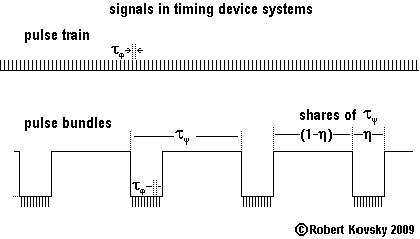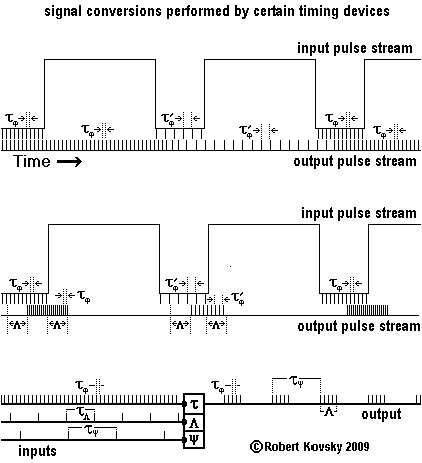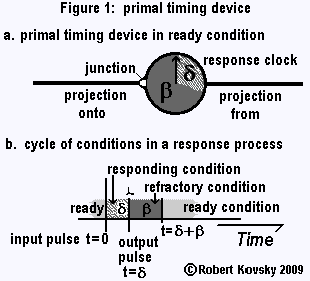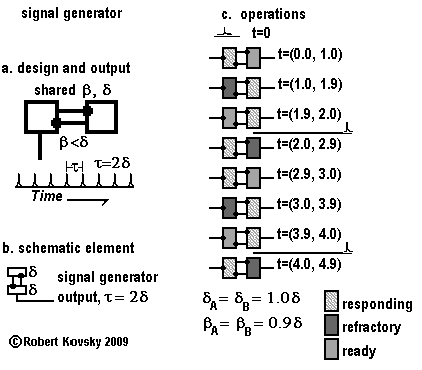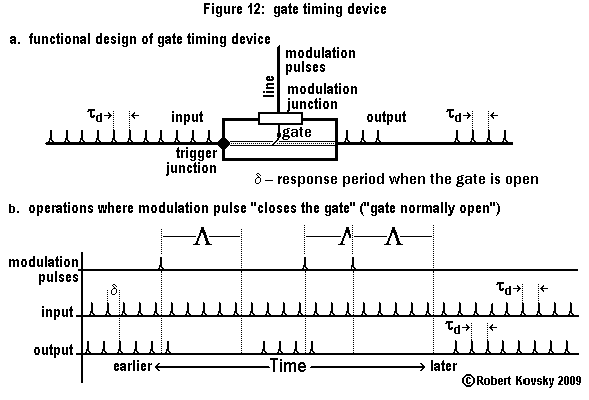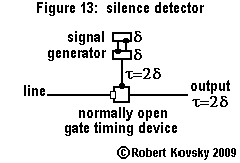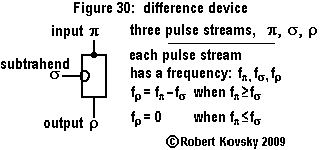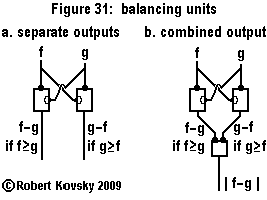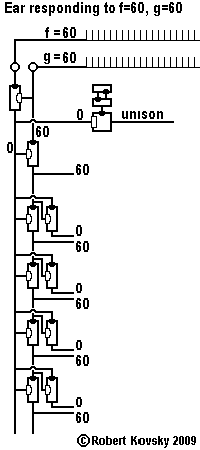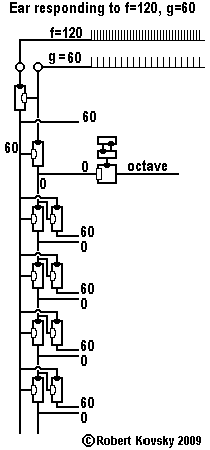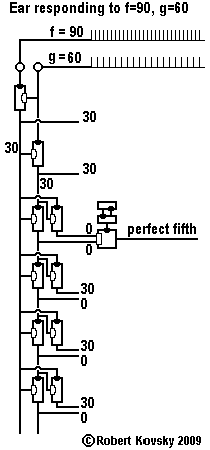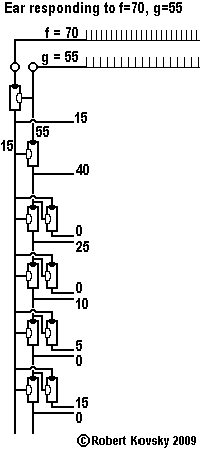|
Timing devices" is a new approach to brain science, based on a new technology.
An Ear for Pythagorean harmonics is a device design that shows how timing devices can imitate brain functions. The design for the Ear is shown in the adjacent image and discussed on this page.
In operation, the Ear detects when two input signals f and g, "pure tones" musically, are in a relationship that is known as a "Pythagorean harmonic" (octave, perfect fifth, major third, etc.). When a harmonic relationship is detected, a signal appears on the output line bearing the name of the harmonic. A frequency combination shown on an internal line, e.g., 3g – 2f, is operative when the relationship is close to the associated Pythagorean harmonic, e.g., close to 3g – 2f = 0 or f = (3/2) g, which is the "perfect fifth" relationship.
The timing devices system has many resemblances to "standard electronic circuits" built from resistances, capacitances, transistors, etc. In both technologies, components belong to a "kit of parts" and are assembled to perform specific functions. However, timing device components are different from standard electronic circuit components and the signals are also different.
Timing devices also resemble neurons. Timing device signals are like the signals that travel on nerves -- a stream of "spikes" or "action potentials," which are instantaneous packets of energy -- called "pulses" in the timing devices system.
|
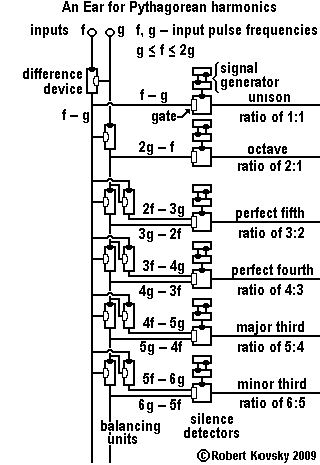
|

